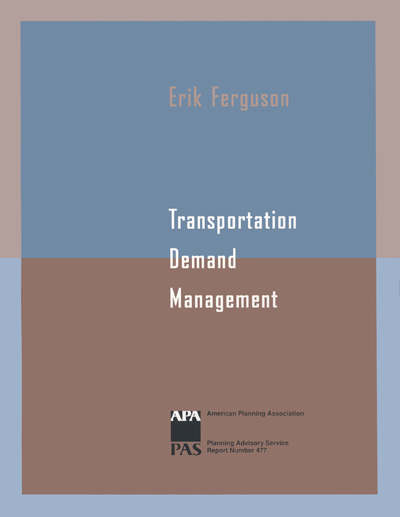Transportation Demand Management
PAS Report 477
By Erik Ferguson

Not a member but want to buy a copy? You'll need to create a free My APA account to purchase.
Create account
Overburdened transportation systems have a dramatic effect on economic development, the environment, and the quality of life for everyone who depends on them. Transportation demand management (TDM) offers planners another tool to reduce the negative consequences of development, most particularly increased traffic congestion and air pollution, while encouraging development where traffic gridlock can be avoided.
This report examines TDM policies and programs, the philosophies behind them, and the focus and participation necessary to make TDM work.
Four case studies and numerous tables provide a detailed and thorough look at TDM in practice, showing what it can achieve and how to make it work for you.
Table of Contents
Preface
Introduction
1. Supply and demand
Bigger is better • Small is beautiful • Strategies
2. Focus and participation
Public sector • Private sector • Tactics
3. Policies and programs
Policy development • Policy planning • Program implementation • Evaluation • Conclusions
4. Case studies
Pasadena, California, traffic management ordinances • South Coast Air Quality Management Ordinances • Montgomery County, Maryland, traffic management ordinances • Parking management in Portland, Oregon
References
Tables


